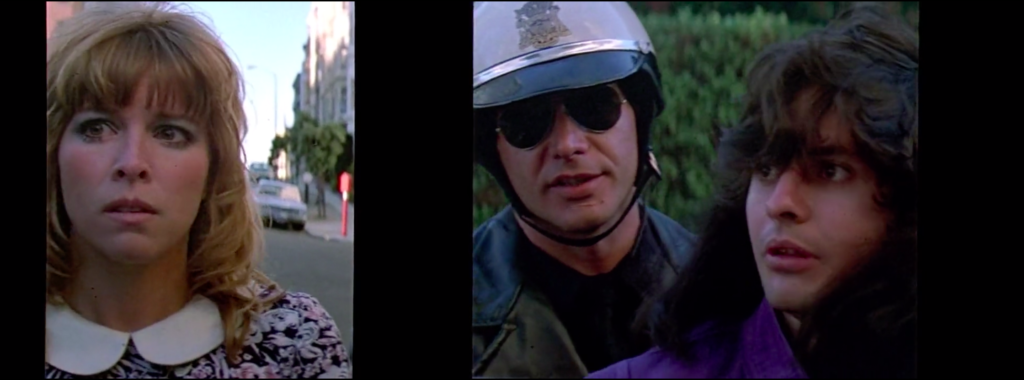
It was pretty anomalous that American Graffiti (1973) became a classic American film when one considers that the film, despite its press, has three authors in the form of director George Lucas, producer Francis Ford Coppola and sound editor Walter Murch. American Graffiti captured a generation’s last night of hanging-out before adulthood began; the last night of their innocence in the sixties.
More American Graffiti (1979) looks at how the rest of the sixties shaped some of those same individuals. The naivete and hopefulness of youth circa 1962 has given way to bitterness and desperation. This shift is reflected in the very structure of More American Graffiti where each character’s story, set on a specific New Year’s Eve, is told in a succession of inter-cut vignettes. The meandering “slice of life” approach of American Graffiti is too calm and too democratizing for these character’s lives in the face of the Vietnam War, student demonstrations, hippie culture, and desperation.
Director Bill L. Norton’s vision of Baby Boomer life is rendered in a series of cinematographic gimmicks meant to signify certain hallmarks of that shared cultural history. Charles Martin Smith’s experiences in Vietnam are shot on 16mm just like the newsreels of that moment while the split-screen that dominates Candy Clark’s adventures in communal living and psychedelic music clumsily recall Woodstock (1970). These devices are intentionally trite and highlight the plasticity of a narrative meant to encapsulate a decade’s worth of national history and personal experiences.
More American Graffiti really is a slapstick grotesque. Cindy Williams, Ron Howard, Candy Clark, Charles Martin Smith, and Paul Le Mat (along with Mackenzie Phillips and Harrison Ford in cameos) reprise their roles though not as the developed characters of American Graffiti but rather as amalgamations of Boomer archetypes. More American Graffiti isn’t interested in the portraiture of the earlier film, its concerns are wholly self-congratulatory; a victory lap for the “survivors” of the sixties.
More American Graffiti just isn’t really about anything or anyone. It’s a film mired by ambitions that cannot be realized in a single narrative feature. Its real value is in how it finds humor in thematically dark places like marital discord, war, police brutality, loneliness and conservative politics. Somehow More American Graffiti never feels in bad taste or exploitative.
The abundant use of pre-fab signifiers in More American Graffiti make the film appear more naive than the characters in the original film. From the vantage point of the twenty-first century the bittersweet celebratory nature of More American Graffiti feels misplaced if not premature. As a slice of film history it not only deepens one’s appreciation for the first film, it also showcases Delroy Lindo and Rosanna Arquette in bit parts early in their careers. However, this is unlikely to be enough to recommend More American Graffiti to most contemporary audiences.
